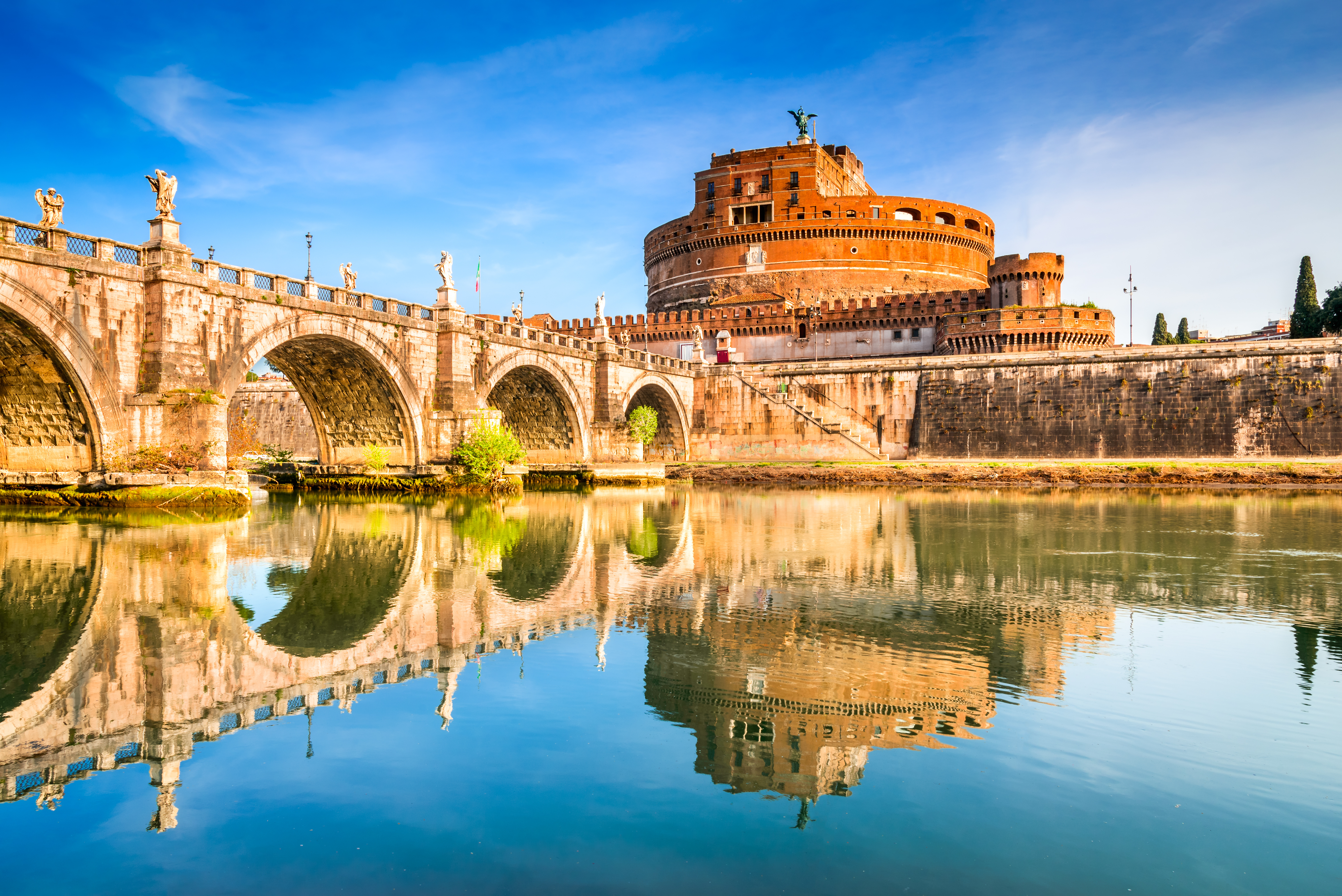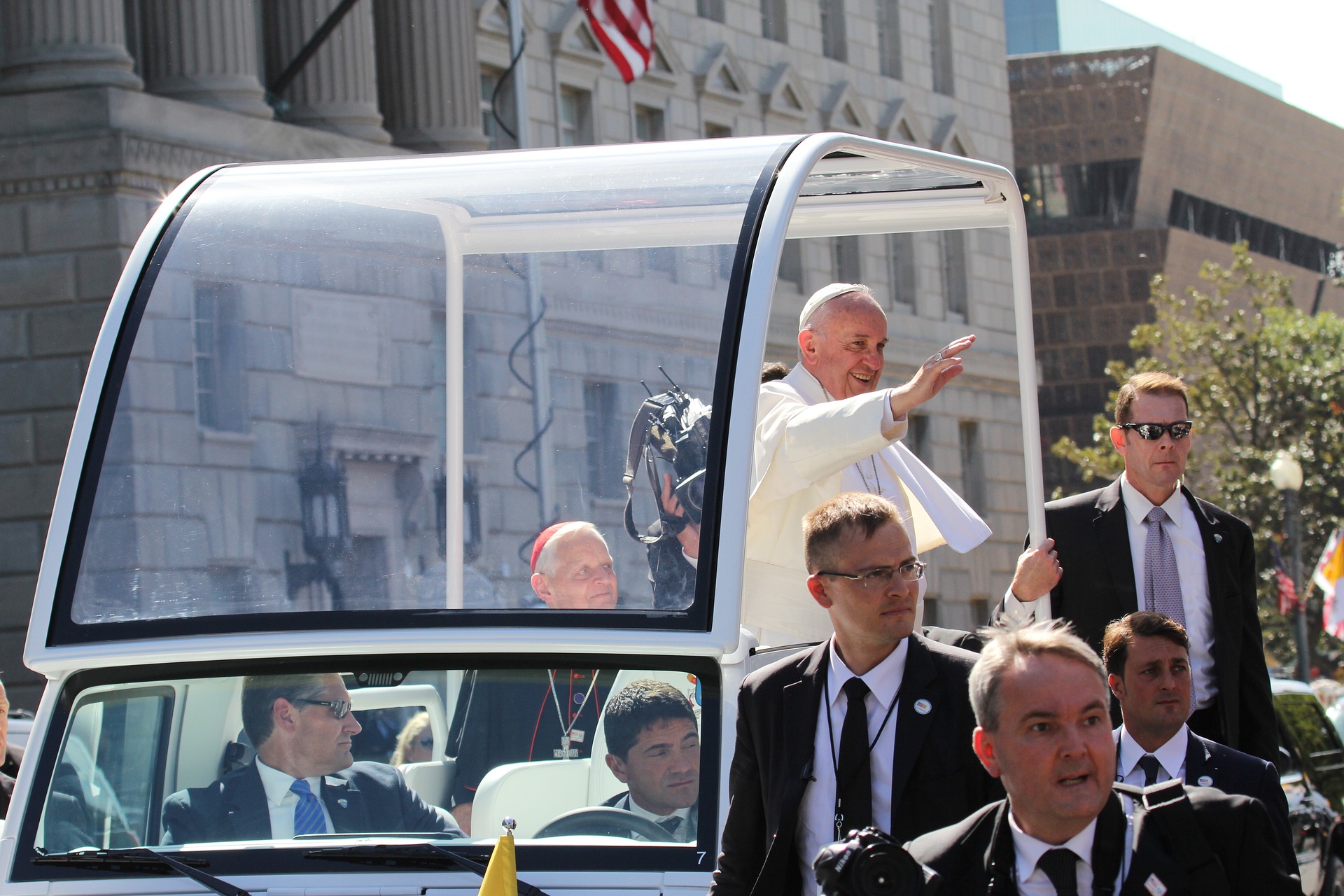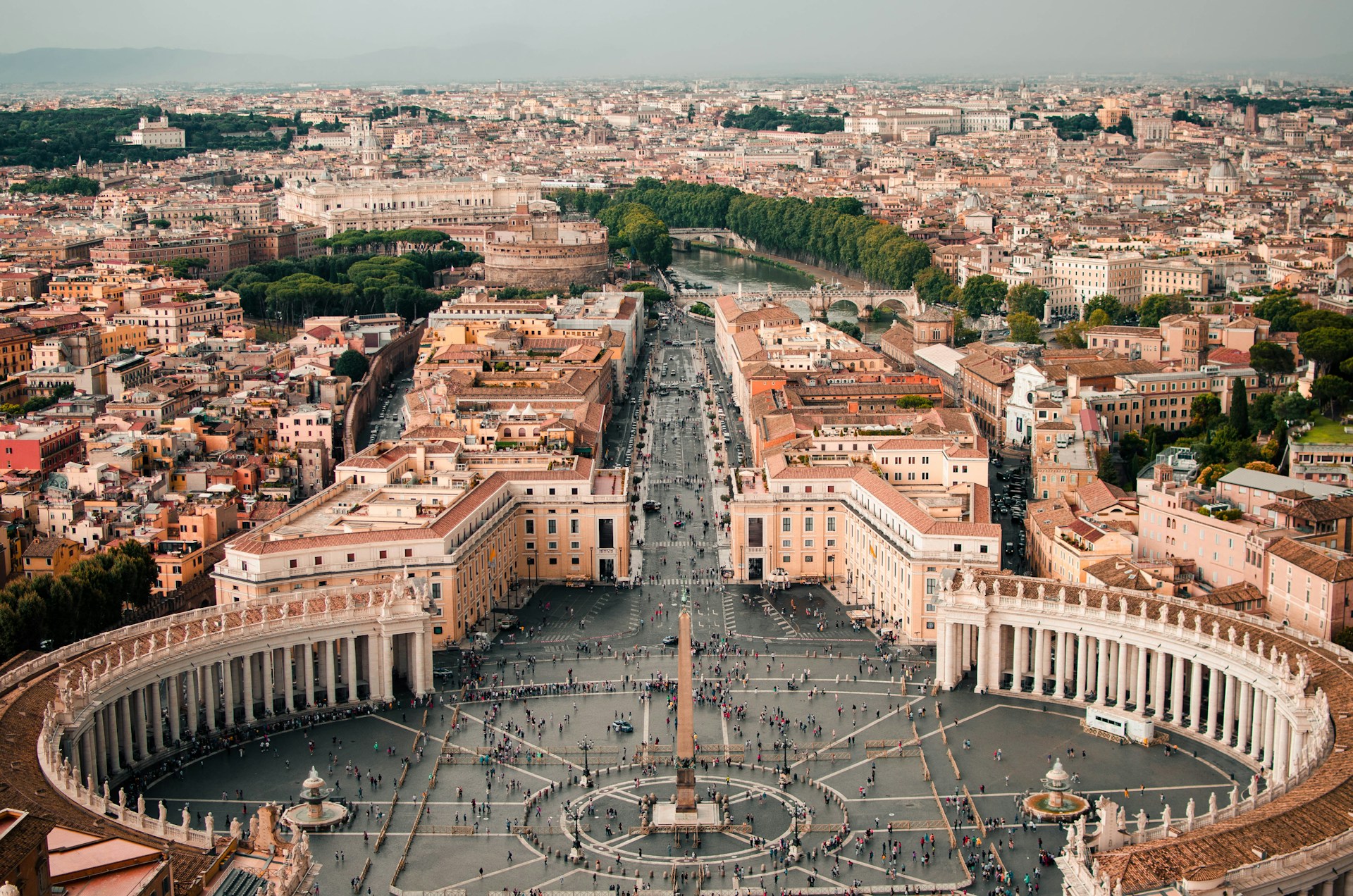
Should You Visit the Castel Sant’Angelo? Here’s Why To Go
Just a short walking distance from St. Peter’s Basilica, the Castel Sant’Angelo is one of my favorite landmarks in Rome. But because of its proximity to the more popular basilica, many tourists often overlook it.
As a local, I love the quiet presence of the Castel Sant’Angelo. I enjoy walking by the river Tiber and admiring its beautiful architecture.
In this post, I’ll give you all the necessary information to decide if you should visit the Castel Sant’Angelo on your trip to Rome and what to see if you decide to go.
What is the Castel Sant’Angelo?

The Castel Sant’Angelo has had many uses over the centuries. The emperor Hadrian ordered the construction of a mausoleum in 135 to serve as his tomb. For this reason, the Castel Sant’Angelo is still known today as the Mausoleum of Hadrian.
Throughout its history, the Mausoleum of Hadrian served as a fortress for the popes, a prison, and even as a place of executions.
Then in the 20th century, it finally became a museum.
Where is the Castel Sant’Angelo located?

You’ll find the Castel Sant’Angelo right in front of the river Tiber, facing the majestic Sant’Angelo Bridge.
From St. Peter’s Square, you can head straight along Via della Conciliazione. In a few minutes, you’ll see the rotunda of Hadrian’s mausoleum in front of you.
The Castel Sant’Angelo is a perfect stop after visiting the Vatican Museums or St. Peter’s Basilica due to its proximity. Even if you decide not to visit it inside, it’s worth the short walk to admire it from outside.
Next to it, in the park, you’ll find the famous Passetto di Borgo. The passetto was a secret passage that connected the Vatican to the Castel Sant’Angelo. In the case of an enemy siege, the pope could use the passage to escape to safety.
The history of the Mausoleum of Hadrian

How did the final resting place of Hadrian end up becoming the fortress of the popes? Let’s dive into the fascinating history of the Mausoleum of Hadrian.
- The emperor Hadrian started the construction of the mausoleum in 135. Antoninus Pius completed it in 139. The inspiration behind it was the Mausoleum of Augustus, but on a much larger scale.
- The Mausoleum of Hadrian contained the ashes of Hadrian and of many other emperors for three centuries. In 410 and 537 the Visigoths and Goths invaded Rome, damaging the mausoleum and scattering the ashes.
- According to the legend, in 590 the Archangel Michael appeared on the top of the mausoleum carrying a sword. This was a sign that the plague Rome was going through was finally coming to an end. Because of this legend, the Mausoleum of Hadrian earned the name Castel Sant’Angelo (castle of the holy angel).
- In the 14th century, the popes transformed the mausoleum into a fortress. Over the next few centuries, the Castel Sant’Angelo was also a prison for the enemies of the popes and a place to execute criminals. Part of the fortress served as a luxurious palace for the popes.
Finally, in 1901, the Castel Sant’Angelo became a museum so visitors like you and me can learn about its history and enjoy its quiet beauty.
What to see at the Castel Sant’Angelo

Every time I visit the Castel Sant’Angelo, I feel like I have discovered one of the Vatican’s best-kept secrets. I loved to get lost in the courtyards and the beautiful halls.
Here are my favorite places to visit inside the castle.
Sala Paolina: This beautiful hall used to be the apartment of Pope Paul III. Here you’ll admire stunning frescoes depicting the life of Alexander the Great.
Terrazza dell’Angelo: The terrace on the top of the castle offers one of the most spectacular views of Rome. I could easily spend an hour just gazing at the Tiber river and the Vatican rooftops. It’s not as impressive as the views from St. Peter’s Dome, but it comes pretty close.
Cortile dell’Angelo: One of the main courtyards of the castle, here you’ll find the statue depicting the Archangel Michael, who gave the castle its name.
Hall of Urns: This hall was the very center of the ancient Mausoleum of Hadrian. This is where they placed the ashes of the emperor Hadrian until they were lost. In this part of the castle, you can get an idea of what the original mausoleum looked like.
Courtyard of Alexander VI: Another impressive courtyard, here you can find a cannon and a catapult used to defend the fortress from invaders. Nowadays it often hosts events, such as plays and opera concerts.
If you don’t have time to visit the Castel Sant’Angelo inside, you can always take a walk along Lungotevere Castello, the riverside in front of the fortress. From there you’ll be able to admire the ancient Mausoleum of Hadrian from a privileged spot.
How to visit the Castel Sant’Angelo

The Castel Sant’Angelo is open Tuesday to Sunday from 9 a.m. to 7:30 p.m. It’s closed only on Mondays, Jan. 1, May 1, and Christmas Day.
The entry ticket costs 15€, plus another euro if booked online. The entry is free for European citizens under 18 years old and every first Sunday of the month for everyone. If you don’t want to book your ticket online, you can buy it directly at the castle.
For convenience, it’s best to buy the tickets online in advance. The castle is usually less crowded in the late afternoon from 4-6 p.m., which is also a great time to enjoy the views as dusk sets in.
Is it worth going to Castel Sant Angelo?

The Castel Sant’Angelo is one of my favorite places in the Vatican area because it’s not as popular as the other landmarks. It’s not very big and the visit won’t take too much of your time.
I recommend visiting if you’re passionate about architecture and Roman history. It’s interesting to see how the tomb became something completely different under papal rule.
However, if you’re short on time in Rome and your itinerary is already full, you can skip the Mausoleum of Hadrian. The interiors of the castle are beautiful but way less impressive than the ones in the Vatican Museums.
If your schedule is tight, you should focus on the other Vatican landmarks, such as the museums and St. Peter’s Basilica. But if you have time to spare, then the Castel Sant’Angelo can be a great addition to your trip.
More to do near Hadrian’s mausoleum

While you’re near the Castel Sant’Angelo, take a moment to relax in the beautiful Parco della Mole Adriana. The park goes all around the castle and it’s the perfect place to take a breather.
Another spot not to miss is Sant’Angelo Bridge. Hadrian ordered its construction to connect his mausoleum to the other bank of the river and called it Aelius Bridge. The statues of the angels that you can admire today were added during the Baroque period. It’s the best place to take an Instagrammable photo of the Castel Sant’Angelo rotunda, and the views are spectacular!
If you feel like going for a walk, I suggest heading to the Borgo Pio neighborhood. This historical district has the charm of a typical Italian village and the best food the Vatican area has to offer.
Do you feel like you haven’t experienced enough of the beauty of Rome? Join one of our Vatican tours and discover all its secrets. We’ll be waiting for you!

